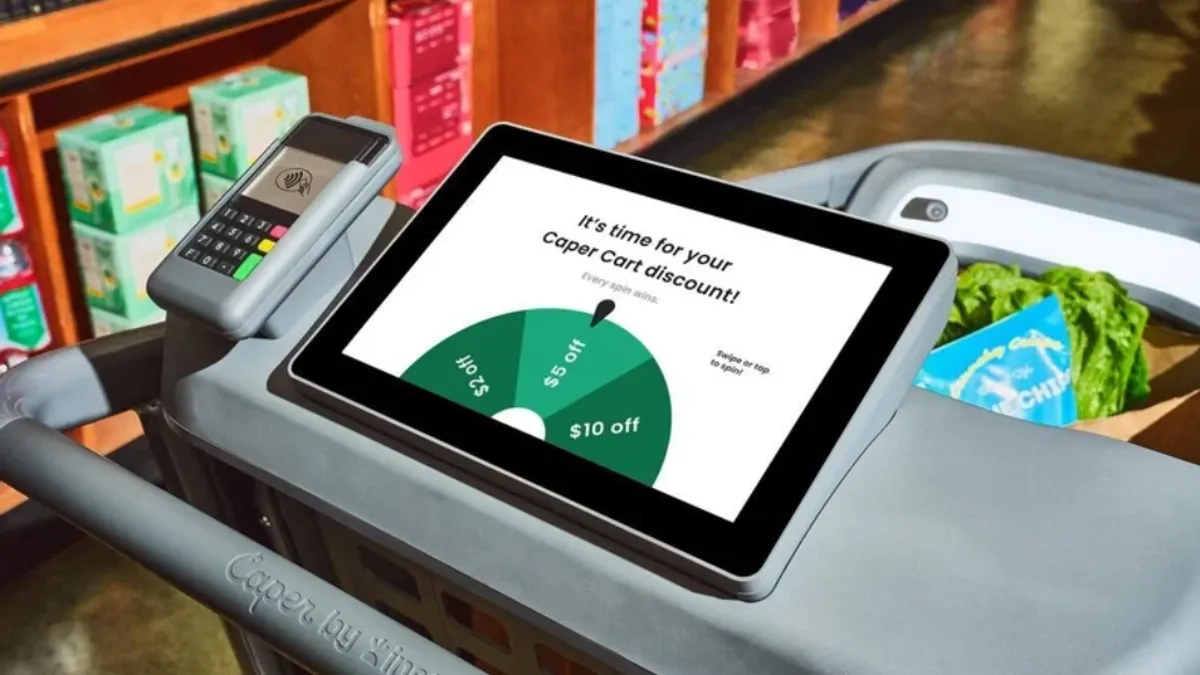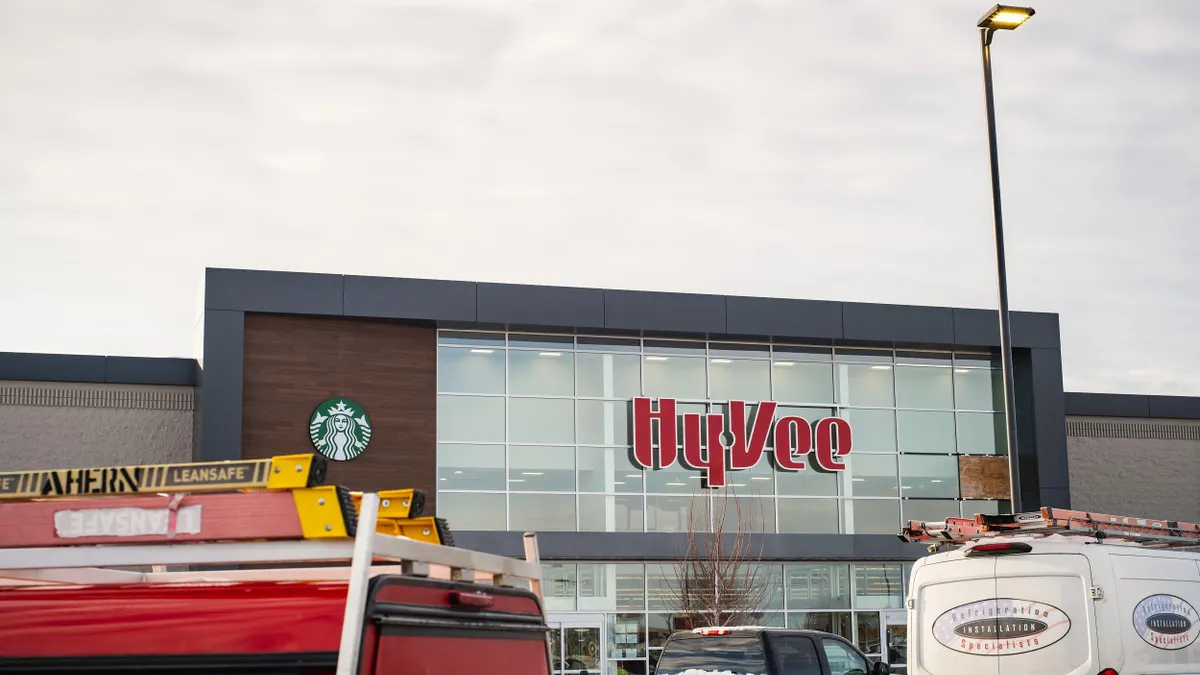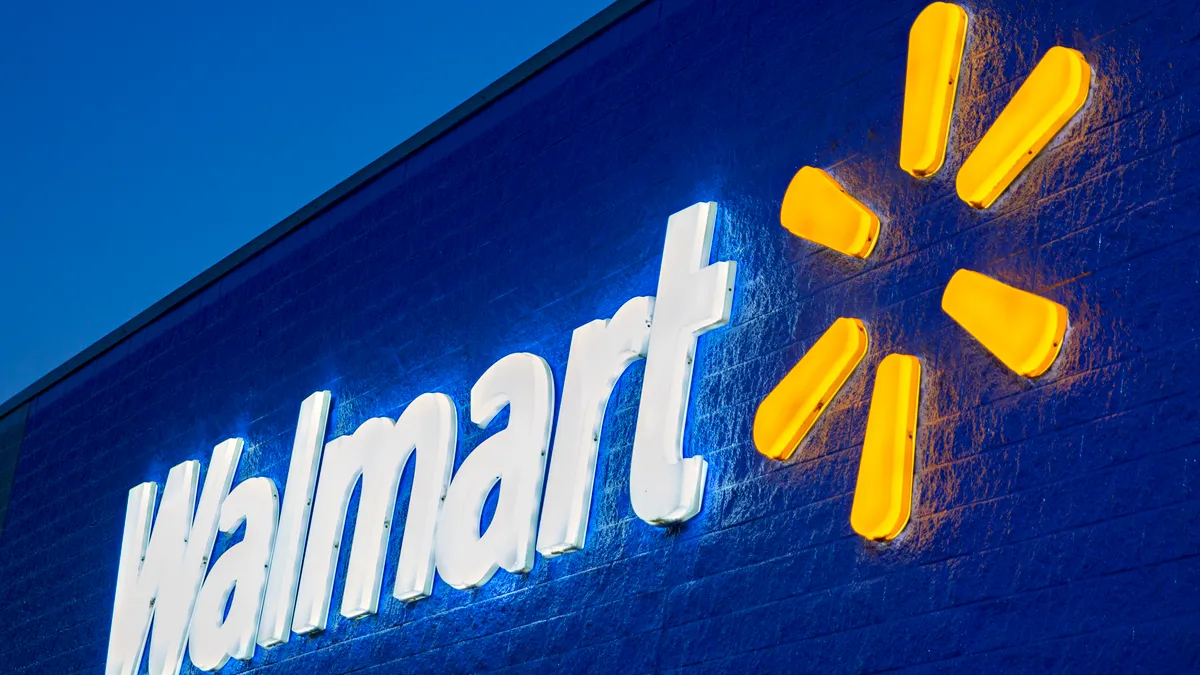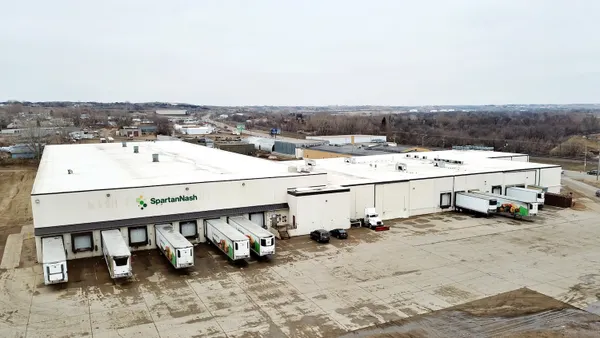Online grocery shopping is set to become a $100 billion business within the next few years, and Instacart believes it can deliver retailers to that milestone and beyond.
"Our goal is to be the operating system for the online grocery industry," said Nilam Ganenthiran, Instacart's chief business officer, in a recent interview with Grocery Dive.
Given Instacart's vast footprint, it may already be there. The company that shrugged off Whole Foods late last year is now valued at more than $7 billion. It handles the ordering software and delivery for more than 300 retailer e-commerce platforms, with an army of gig workers picking and shuttling groceries to consumers' homes and curbside pickup points across more than 20,000 stores. In all, more than 80% of U.S. households can now get their grocery orders filled through Instacart.
Having rapidly built out its network over the two years following Amazon's acquisition of Whole Foods, Instacart is now focused on finding new ways to drive sales, said Ganenthiran. This includes beefing up its Enterprise business, which includes white-label sites under its "Powered By Instacart" platform as well as Unata, the web services company Instacart acquired early last year. It's also pushing into new services like alcohol delivery, now available through retailers in 20 states, he said.
Store pickup, which revved up last November after more than two years in test mode, is growing faster than Instacart anticipated, with stores across more than 30 states now offering the service. In six months' time, the number of stores offering Instacart pickup has doubled, with many adding on to their existing delivery service.
Instacart's pickup orders are 20% larger than its delivery orders, Ganenthiran noted. "It's frankly been more successful than we ever thought," he said.
As consumer e-commerce adoption accelerates, Instacart is hustling to stay competitive with Amazon, Walmart and Target, which owns competitor Shipt. Last November, Instacart slashed fees for individual orders and for its Instacart Express membership service, which now costs $99 annually.
The company has also built up its engineering team under chief technology officer Mark Schaaf, a Google veteran the company hired last year, and is adding facilities like a $40 million, 400-employee support center that's slated to open in Atlanta.
Who owns the customer experience?
By 2025, Instacart is set to have a hand in 19% of the online grocery market, according to a Deutsche Bank report published late last year, putting it toe-to-toe with Walmart and Amazon.
Instacart's rapid rise over the past few years has drawn plaudits from across retail. But has the e-commerce company grown too big for grocers? A recent report from Barclays titled "Dissecting the Instacart Addiction" — a name that reflects customers' and retailers' reliance on the service, according to the firm — states that many shoppers are more loyal to Instacart than to the retailers it partners with.
In a survey of over 500 Instacart shoppers, conducted in partnership with consulting firm AlixPartners, Barclays found that while half said they are using the service more than they were six months ago to buy groceries, 43% said they would switch to another retailer if their preferred one was not listed on Instacart's marketplace.
Being seen as interchangeable at a time when securing customer loyalty online is foremost in many retailers' minds could be problematic. The report also cautions that linking up with Instacart can prevent retailers from making vital technology improvements by essentially outsourcing those capabilities. It highlighted Toys R Us, which handed its e-commerce operations over to Amazon in 2000, as a cautionary example.
"At the time, this decision made a certain kind of sense for Toys R Us: Its e-commerce was fast-growing but also small, margin-dilutive and hungry for capital," the report stated. "But as a result, Toys R Us failed to develop the expertise it needed to win in e-commerce. When it ended its agreement with Amazon and regained control of its e-commerce business it had lost the digital race, and it filed for bankruptcy a few years later."
Karen Short, managing director with Barclays and lead author of the report, said in an interview with Grocery Dive that many retailers have partnered with Instacart because they don't have the money and expertise to quickly ramp up a competitive e-commerce platform on their own. But by owning the online marketplace along with delivery, she said, Instacart gets credit for positive experiences while retailers often take the blame for problems like out-of-stocks.
"In my opinion, you have all the downside and not much upside," Short said.
She also questioned the economics of dealing with the company, saying retailers that pay a fulfillment fee to Instacart and keep prices online comparable to those in-store are losing money on each transaction. (Retailers can, alternatively, choose to set higher prices or institute an additional fee so that customers, in essence, cover the cost of fulfillment.) According to Barclays' research, Kroger pays an estimated 6% fee on a $100 Instacart order, which after accounting for margins results in a $3 operating loss.
Retailers want to offer competitive pricing online, she said, and they justify the fees they pay by focusing on the larger basket sizes and incremental customers that Instacart delivers.
"[Retailers] get a turnkey solution that in their minds doesn't come at a cost," Short said.
The report also raised concerns over the customer data Instacart collects, noting the company can leverage this data to compete with retailers for trade dollars from suppliers. Grocers like Kroger have come to rely on these vendor dollars, and some have built separate marketing platforms to boost spending. Barclays estimates total trade spending across grocery to be $70 billion.
"I would say that all data should reside with the retailer," Short said. "I don't think it's an acceptable solution to share the data."
"[Retailers] get a turnkey solution that in their minds doesn't come at a cost."

Karen Short
Managing director, Barclays
'The mall exists to drive a lot of traffic'
Ganenthiran said Barclays' customer findings don't match its internal research and said the firm was "looking for a controversial position." He said reports from other investment firms, as well as press testimonials from retailers, point to the "additive nature" of Instacart's business.
"We've proven to our partners time and time again that our focus is on bringing incremental sales and customers to them in the most cost-efficient manner possible while staying true to their brands," he said.
Instacart has grown its advertising business over the years, but Ganenthiran said the company also uses the data it collects to help retailers see how customers are buying on their sites and across the industry. He declined to say how or if data gathering differs between its marketplace and white-label offerings.
"We use data to help our retail partners better understand their customers — what they're buying, when, how often, etc. — and help retail partners better understand what they are seeing in their store versus what is happening online," he told Grocery Dive via email. "For example, we can use data based on shopping patterns to help a retail partner understand when they need to restock or change out a certain type of produce."
As for customer loyalty, he pointed to its white-label sites as examples of the Instacart brand taking a backseat to retailers. He said the company's marketplace, meanwhile, exists to drive incremental customer growth for retailers. Shoppers can survey a range of grocery brands, then engage closely with whichever one they choose.
"I view it as going into a mall," said Ganenthiran. "There are multiple stores in the mall. Our job together as an industry and for retailers specifically is to get someone to walk into your store. The mall exists to drive a lot of traffic."
Ganenthiran emphasized Instacart has no plans to become a grocer itself. The company, he said, sees itself as empowering retailers and deepening customer loyalty with them.
"We try to train our customers to pick a retailer and then build her entire basket from that retailer," he said. "Otherwise, it's not economical."
"We've proven to our partners time and time again that our focus is on bringing incremental sales and customers to them in the most cost-efficient manner possible while staying true to their brands."

Nilam Ganenthiran
Chief business officer, Instacart
Opportunities and challenges ahead
As online grocery sales grow, retailers may look to establish their own platforms and forge new alliances. Kroger, for one, currently utilizes Instacart delivery, but is building out a network of fulfillment centers with British e-grocer Ocado, which operates its own delivery platform in the U.K.
And while Instacart's lead among e-commerce service providers is a commanding one, competitors are advancing in the space. Close rival Shipt has rapidly expanded its same-day delivery service under Target's ownership. New online service providers are cropping up as well and taking direct aim at Instacart. Seattle-based Dumpling is tiny by comparison, but it's pitching gig workers on the prospect of starting their own grocery shopping business.
Instacart has faced criticism for how it manages and compensates the contract workers who shop and deliver groceries, and the company has responded with updates to its policies along with new resources like same-day payments and access to insurance plans.
Still, reports continue to paint an unflattering portrait of the company. In July, Bloomberg reported Instacart is prodding workers into filling low-value orders and then decreasing their status if they decline. The company claims workers are never forced to accept orders and that it doesn't punish them for turning down orders.
Around the same time, Fast Company reported Instacart was hiding delivery addresses for its "on-demand" orders — those orders that workers can claim outside of their normal shift hours — and creating safety issues for its drivers. Instacart said it's protecting customer privacy and that it gives approximate locations to let workers gauge the safety of a neighborhood.
Challenges aside, Instacart wants to prove its long-term value for shoppers and grocers. Ganenthiran said it's focused on making online shopping a more compelling experience for consumers. The company, like many online shoppers, has mastered the reorder button and browsing by department. But growing the business, Ganenthiran noted, depends on getting shoppers to explore new products and categories and, ultimately, build bigger baskets.
Instacart has no plans to establish a consulting team or staff up with marketers, recipe developers and other content specialists, he said. Instead, Instacart wants to focus on the technology and let retailers figure out how best to recreate their brand experience online. Food Lion's new Unata-built site organizes products by recipe, for instance, while Sprouts Farmers Market's recently updated site focuses on health and wellness messaging.
"We have teams of people optimizing various micro parts of the experience," said Ganenthiran. "This isn't something there isn't a silver bullet for. It's just a constant, day-to-day improvement of the customer experience."





















